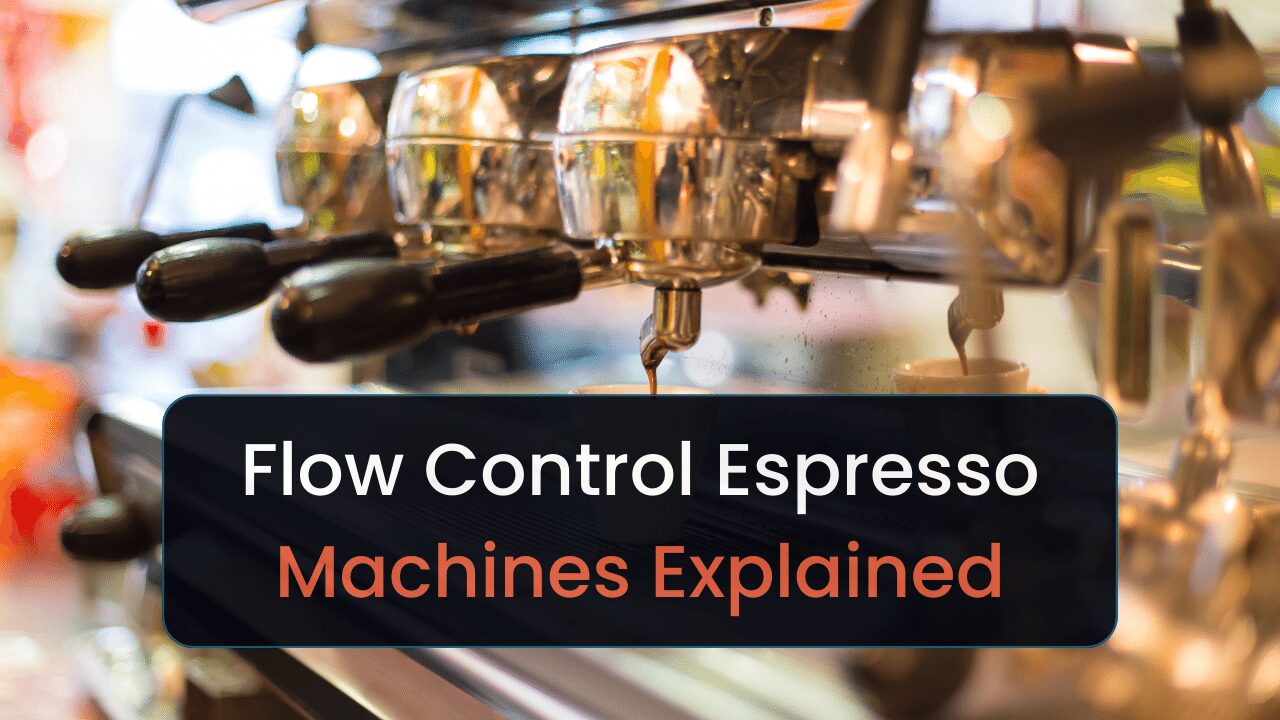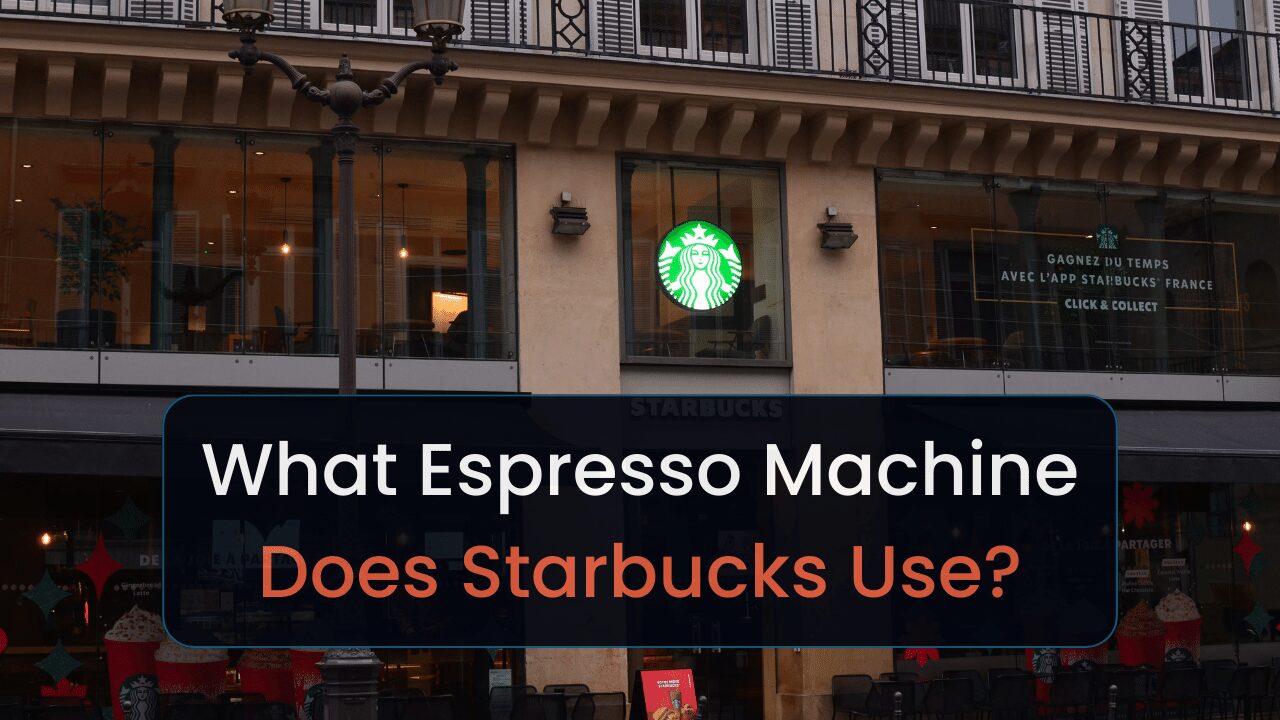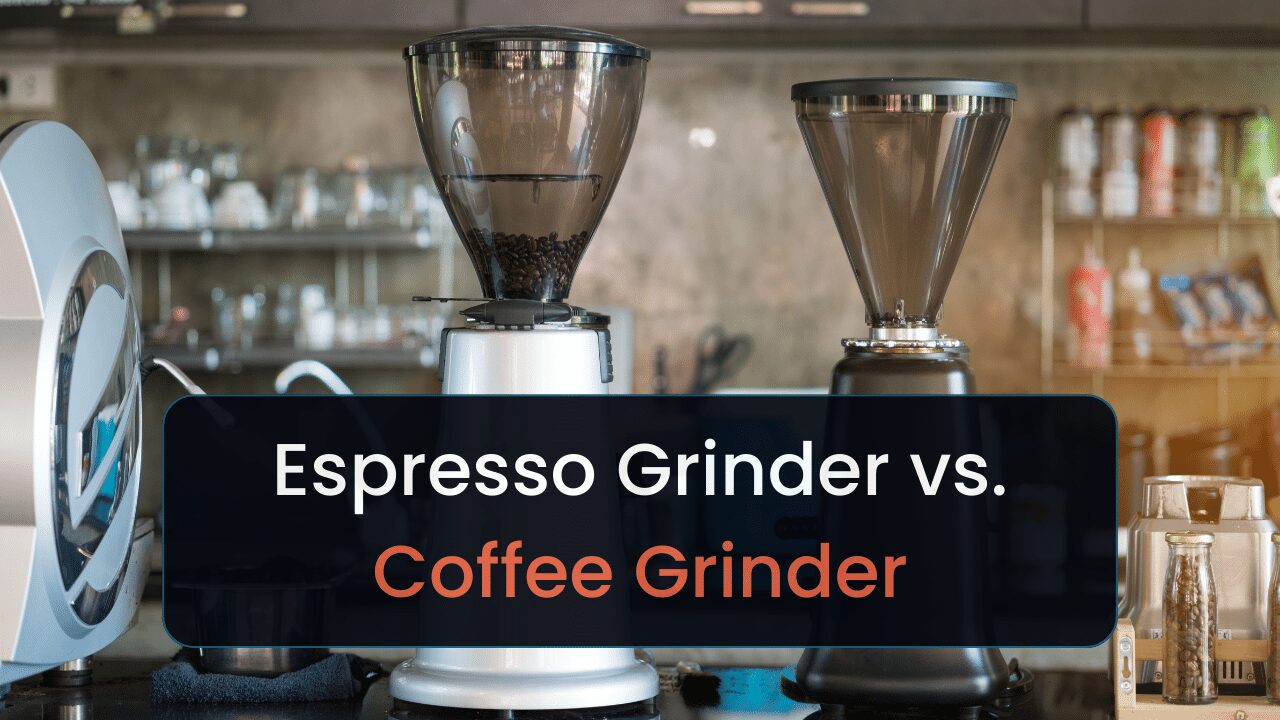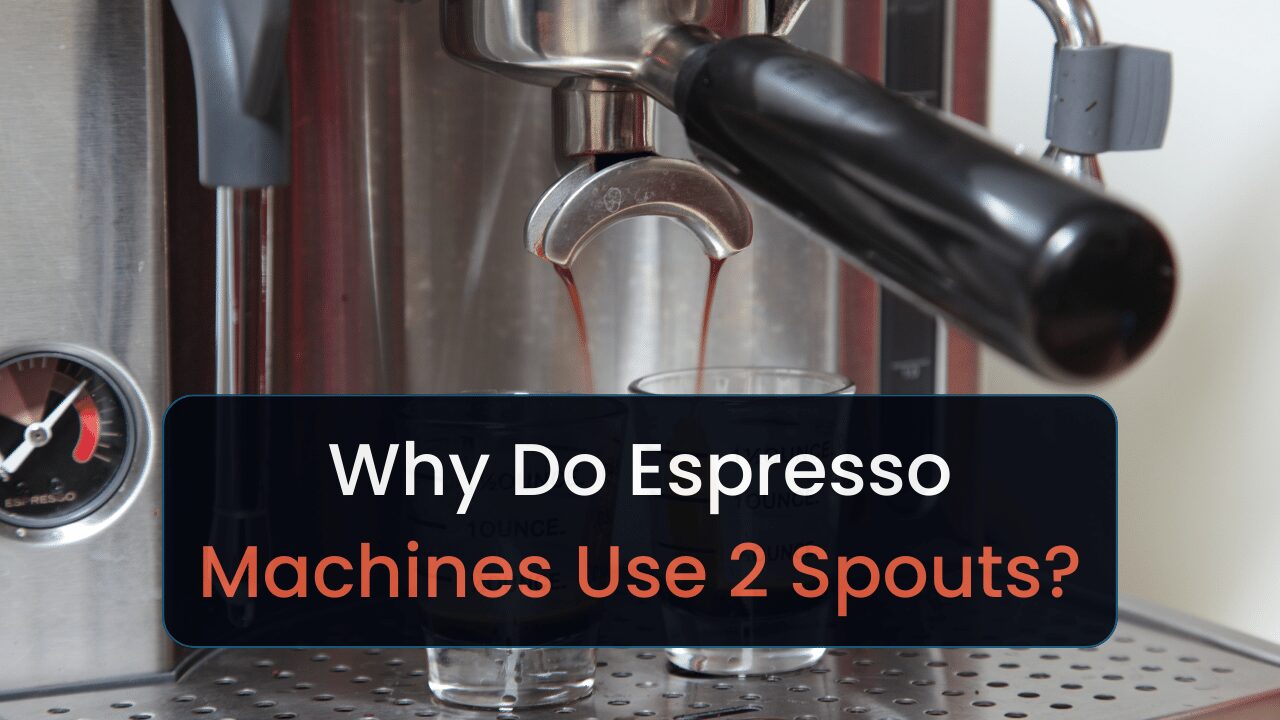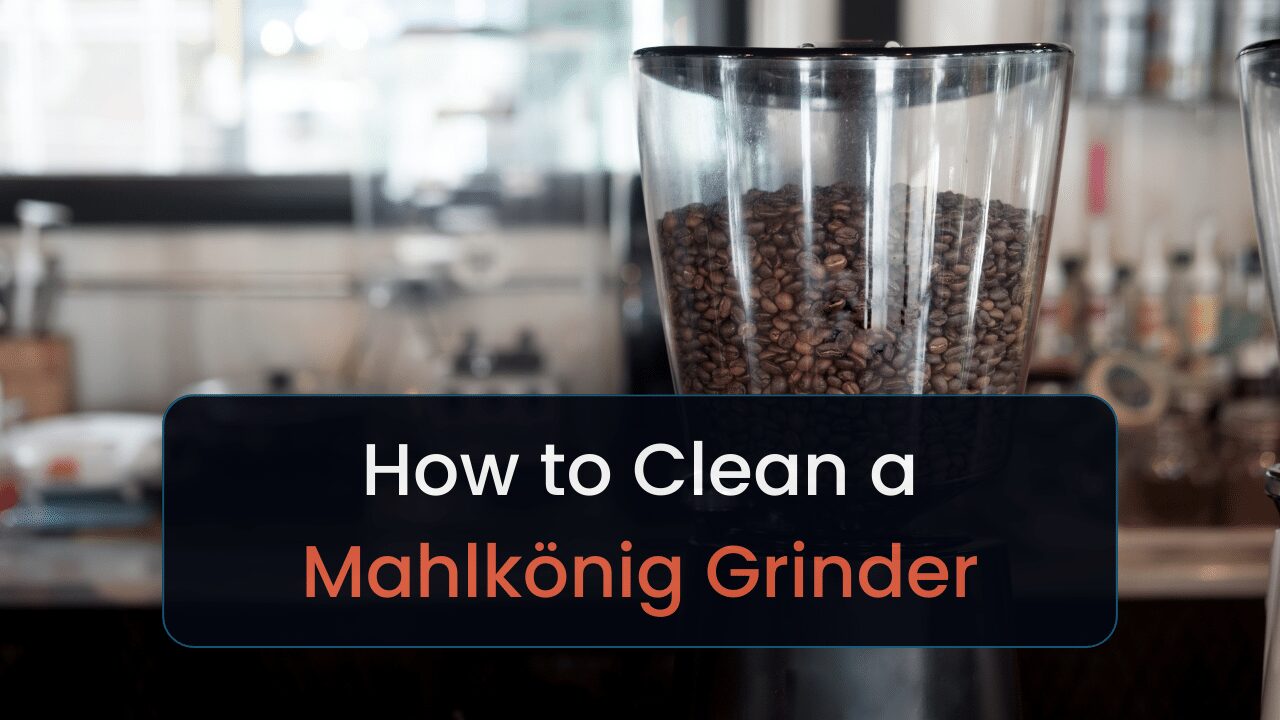I’ve been trying to find a high-quality espresso machine and don’t know what to get. That led me to write this guide on my findings.
To find an ideal espresso machine, we’ll explore these points:
- Buying guide
- Espresso machine parts & why they’re important
- Home vs. commercial espresso machines
- Different types of espresso machines
- Popular espresso machine manufacturers
- Best espresso machines for beginners
- Best coffee bean grinders
- What espresso is
- What an espresso machine is
- How an espresso machine works
- What you can make with an espresso machine
Let’s go shopping.
Key Takeaways
Key Takeaways
- Consider price & the type of machine you want above all else
- Focus more on buying a high-quality grinder than an espresso machine
- Offices or homes who brew for more than a couple people should consider commercial machines
- Shop from reputable brands for quality & warranty sake
Factors to Consider When Buying an Espresso Machine
The most critical factors those buying home espresso machines must consider are price and the time you’ll spend with your machine. By time, I refer to the ease of cleaning and espresso-making speed.
Businesses must consider everything below to buy a machine that won’t exceed their budget, yet can reliability deliver coffee to guests.
1. Machine Size vs. How Much Counter Space You Have
Measure the amount of countertop space you have. If you have enough space to fit the machine you want, will you leave it on the counter? If not, check whether you have enough room in your cupboards.
Many manual espresso makers look nice and would add a more decorative touch to your kitchen or coffee station. That way, it’s practical to leave it out, and it won’t negatively impact your home’s decorative style.
Larger espresso machines have additional components and features. If you’re after that, you’ll need a bigger machine.
2. Machine Usage Frequency
Use the machine to make a drink or 2 a day, and you’ll want an espresso maker with a small dual boiler or single boiler.
Aim for a large dual boiler to make many drinks back to back. For instance, if you have more than a couple people in your home who frequently drink espresso. Having a dual boiler is helpful for preventing people from having to waste time waiting for you to brew your drink.
3. How Easy Is It to Clean?
Avoid models with many smaller parts requiring frequent cleaning if you don’t have much extra time. Before buying a machine, understand what you’ll need to clean it with, how to clean it, and how long it’ll take.
Also factor in descaling and decalcifying espresso machine water reservoirs. As you must descale them at least once every 3 to 4 months [1].
Descaling and decalcifying are processes that remove mineral buildup, primarily calcium and limescale, from the internal components of appliances. In this case, your espresso machine. These deposits can negatively affect the function and lifespan of the machine.
Limescale buildup could impair your machine’s functionality by clogging water pathways and reducing water flow. This clog would result in uneven machine heating.
To decalcify and descale an espresso machine, you’d need to use a specialized descaling solution or a mixture of water and white vinegar. Then run it through the machine’s brewing cycle. Afterward, flush the machine with clean water to remove any remaining solution or mineral residue. This can take a hour or so.
4. Machine Pressure
Machine pressure matters because it extracts rich, flavorful espresso from the coffee grounds. Higher pressure forces hot water through the grounds more effectively and helps extract more flavors from your beans. Resulting in a more full-bodied espresso shot.
The ideal pressure for an espresso machine ranges from 9 to 15 bars.
The bars in pressure impact extraction, flavor, and crema in espresso. Pressure around 9 bars provides optimal extraction, resulting in a balanced and full-bodied taste.
Lower pressures may lead to under-extracted, weak, and sour espresso.
Excessive pressures may cause over-extraction, bitterness, and a burnt taste.
5. Price
Higher-priced machines may offer better materials, advanced technology, and longer lifespans, while budget-friendly options could compromise performance or longevity.
You’ll also find enormous price differences among varying machine types. All-in-one (super-automatic machines) cost much more than lever machines. However, the latter works well for coffee enthusiasts.
And it doesn’t account for coffee grinder costs. Because you will need this. Unless you grind your beans at the store.
6. Customer Service & Warranties
Check the money-back guarantee or warranty for your product. If the manufacturer has one, they likely have more confidence that their products will work for a long time. And if it doesn’t, you could send it in for a new one.
However:
You’ll need customer service who won’t create a massive barrier to entry. Or who are pleasant to deal with. Because you’ll need to speak with them regarding repairs and new parts.
7. Machine Durability
The warranties included in each machine (if included) may give you an idea of how long your machine should last. Consider that, along with the brand’s reputation and product reviews. I don’t recommend viewing product reviews on sales pages, though.
Some brands may allegedly buy reviews or convince users to give them positive reviews. Visit coffee forums, coffee subreddits on Reddit, or trustworthy coffee blogs (wink wink) and see what people have to say about the machine you want.
8. Brewing Speed
Brewing speed matters when buying an espresso maker because it affects convenience and taste. Faster machines, like super-automatics, brew espresso in under a minute, which is ideal for busy mornings.
Manual or semi-automatic machines may take longer but offer more control over brewing, appealing to coffee enthusiasts.
Consider your lifestyle and preferences when choosing a machine with the right brewing speed.
9. Temperature Consistency
Temperature consistency matters in espresso machines because it impacts flavor and extraction. Appliances with stable temperatures ensure evenly extracted shots, resulting in balanced, delicious espresso.
Inconsistent temperatures may cause over- or under-extraction, leading to bitter or sour flavors.
10. Built-In Grinder vs. No Grinder
If you don’t want to buy a separate coffee grinder, getting a machine that includes one may save you a bit of space.
If the machine does include a grinder, get one that’ll provide the consistency you need. I recommend getting a separate grinder, and to get the best one possible. A good grinder will help create more uniform bean grinds, leading to better-tasting coffee.
The more control you have over your grind, the better-tasting coffee you’ll make.
11. Accessories
Accessory choice matters when selecting an espresso machine because it affects brewing quality and convenience. Different accessories, like portafilters or tampers, impact the final espresso shot.
Choosing the right accessories ensures proper extraction and a user-friendly experience.
Not all machines offer accessories, though. And some COULD cost more than buying a new machine with said accessories. Compare the add-ons each machine includes and see which offers the best options.
12. Ease of Use
Varying espresso maker types have different difficulties in using. I’ll cover these differences in a bit. In short, super-automatic makers give you the least control over your drink, but automate espresso making.
Manual makers give you the most control, but have the highest learning curve.
Different Espresso Machine Parts & Why They’re Important
Here are most of the important parts you’ll need to know about when getting an espresso maker:
| Steam wand | Coffee grinder | Machine pump | Water reservoir |
| Pre-infusion function | Pressure gauge | Boiler | Portafilter |
| Temperature control | Drip tray |
Different parts of espresso machines.
Most of the following sections will explain what each part does and why it’s crucial for the machine’s function. I’ll also talk about how to search for the highest quality version of that part and any accessories to improve its functionality.
1. Steam Wand
A steam wand is a key espresso machine component that steams milk for creamy cappuccinos and lattes. The right one ensures consistent milk frothing and optimal texture.
To determine if a steam wand is good, consider these factors:
- Material: look for a steam wand made from high-quality stainless steel, as it’s durable and easy to clean
- Design: a well-designed steam wand should have a comfortable grip and be easy to maneuver
- Steam pressure: a good steam wand should produce strong and consistent steam pressure for efficient milk frothing
- Control: it should offer easy control over steam flow, allowing for precise milk frothing and temperature adjustments
- Cleaning: a good steam wand should be easy to clean and maintain, with some models featuring an auto-purge function for hassle-free cleaning
2. Coffee Grinder
An espresso machine’s built-in grinder is a component that grinds coffee beans into the optimal size for brewing espresso.
A good built-in grinder delivers consistent grind size, ensuring balanced extraction and a delicious shot of espresso.
To determine if a coffee grinder is high quality, look for features such as:
- Multiple grind settings
- Burr grinders instead of blade grinders
- Sturdy construction.
However:
Investing in a separate grinder provides several advantages.
A stand-alone grinder often offers a broader range of grind settings, catering to different brewing methods. If the espresso machine or the grinder malfunctions, you won’t need to replace the entire setup, saving you money in the long run.
3. Machine Pump
An espresso machine pump is a crucial component that pushes water through the coffee grounds at the right pressure to extract a perfect shot of espresso.
A suitable pump ensures consistent pressure and maintains the ideal brewing temperature, producing a rich, full-bodied espresso.
There’s nothing else to talk about regarding this component.
4. Water Reservoir
A water reservoir in an espresso machine holds the water needed for brewing. Selecting the right size is important for convenience. And ensuring it can meet the number of shots you’ll need to make before refilling it.
Here’s a table showing different reservoir sizes and the approximate number of espresso shots they can make:
| Reservoir Size (Cups) | Reservoir Size (Liters) | Espresso Shots |
| 4 | 1 | 33 |
| 6.3 | 1.5 | 50 |
| 8.4 | 2 | 66 |
| 10 | 2.5 | 83 |
Espresso machine reservoir size and the number espresso shots each size could make.
These numbers are approximate and can vary depending on the machine and the size of the espresso shots.
5. Pre-Infusion Function
The pre-infusion function in an espresso machine gently moistens the coffee grounds before applying full pressure. This process ensures even extraction and enhances the coffee’s flavor.
Choosing a device with a practical pre-infusion function helps achieve consistently delicious espresso.
6. Pressure Gauge
A pressure gauge in an espresso machine displays the brewing pressure. It’s essential for fine-tuning extraction. A good gauge ensures optimal pressure, which leads to a perfect espresso.
Semi-automatic and some higher-end manual espresso machines often feature a pressure gauge.
7. Boiler
An espresso machine’s boiler heats the water used for brewing and steaming. Picking the right one ensures consistent temperature and optimal performance.
Single, dual, or heat exchanger boilers impact temperature consistency and brewing efficiency.
Before you ask, here are the differences among the boiler types:
- Single Boiler: best for brewing for 1–2 people
- Heats water for both brewing & steaming
- Requires waiting between brewing & steaming processes
- Generally more affordable
- Dual Boiler: best for offices & cafés
- Separate boilers for brewing & steaming
- Allows simultaneous brewing & steaming
- More expensive
- Heat Exchanger Boiler: small coffee shops that want a more affordable machine to service multiple people
- Single Boiler with a heat exchanger inside
- Allows near-simultaneous brewing & steaming
- Mid-range price between single & dual boilers
8. Portafilter
A portafilter is an espresso machine’s removable component that holds ground coffee. It’s essential for controlling extraction and maintaining the right pressure.
Consider the size, basket type, and material to find the best one.
Accessories like the following will improve the way your portafilter extracts flavor and provide consistency:
- Precision baskets: enhance extraction consistency by ensuring uniform coffee bed density
- Bottomless portafilters: offer visual feedback during extraction, allowing you to spot channeling & adjust technique
- Distribution tools: ensure even coffee grounds distribution within the portafilter
- Tampers: provide consistent tamping pressure
- Dosing funnels: minimize spillage and waste, ensuring the right amount of coffee grounds reaches the portafilter
9. Temperature Control
Temperature control in an espresso machine impacts flavor extraction. Precise, stable temperatures yield well-balanced, delicious espresso. While shopping, look for devices with PID controllers, as they maintain consistent brewing temperatures.
10. Drip Tray
A drip tray catches spills and drips during espresso brewing. It keeps your countertop clean and simplifies maintenance.
Look for large, removable, and easy-to-clean trays when shopping.
To enhance the drip tray experience, consider these accessories:
- Stainless steel covers: protect the tray, making it more durable and easy to clean
- Drain kits: connect the tray to your building’s plumbing, automatically disposing of excess water
- Drip tray risers: elevate the tray, providing more clearance for larger cups or mugs
Home Espresso Machines vs. Commercial
Those who need to make more than a few shots daily should consider a commercial machine.
Manufacturers build home espresso makers out of inexpensive materials to allegedly increase margins and improve affordability for consumers.
Meanwhile, manufacturers design commercial machines to withstand hundreds of customer orders a day.
If you’re buying a device from an office, go commercial. They’ll last longer and give your team more than enough rocket fuel to conquer the world in whatever business you’re operating.
They’re expensive, though. But compare that to the maintenance and replacement costs for home espresso machines.
Types of Espresso Machines Compared
Different types of espresso machines you could get include:
| Machine Type | What it Automates | Best for | Avg. Price * |
| Super-automatic | Everything | Automated traditional espresso | $800–$5,000 |
| Semi-automatic | Pressure & water flow | Restaurants & home use | $200–$2,000 |
| Automatic | Grinding, tamping, & brewing | Balancing cost & automation | $300–$3,000 |
| Manual | Nothing | Learning the basics | $100–$800 |
| Capsule | Everything | Convenience, cost, & speed | $100–$700 |
| Percolator or Stovetop Maker | Nothing | Affordability | $20–$100 |
I’ll talk more about these machines and who they’re best for throughout the following sections.
1. Manual Espresso Makers
Pros:
- Produces high-quality espresso
- More control over your espresso
- Looks good on a countertop (decorative)
Cons:
- Difficult to clean
- Expensive
The manually operated—piston or lever makers—give you the most control over your grind, milk temperatures, brewing, and brew time. That’s partially because you could use a lever to control the pressure for your shot.
Despite my claims on its high price, I mention a manual machine that’s under a couple of hundred dollars later.
Get a manual maker if you’re an espresso enthusiast.
2. Capsule
Pros:
- Convenient
- Easy to use
- Quickly makes drinks
Cons:
- Limited to capsules the manufacturer offers
Plop a pod in a machine, press a button, and let the capsule maker brew your espresso. It doesn’t require any beans, or a grinder, but it will likely give you the least-satisfactory drink.
None of them also include steam wands or frothers. If you want to make cappuccinos, lattes, or other frothed milk drinks, you’ll need a separate frother. Or a manual maker like a whisk.
3. Steam
Pros:
- Doesn’t require an expensive espresso machine
Cons:
- Not exactly espresso
Steam espresso machines and Moka Pots force boiled water and steam through coffee grounds, and coffee drips into a mesh filter. It produces coffee that’ll give you an espresso-like taste.
But it’s not espresso.
4. Automatic
Pros:
- Most affordable automatic machine
- Saves you time on brewing
- Simple maintenance
Cons:
- Can’t customize your drink much
What makes this machine different from the 2 counterparts I’ll mention in the following sections? Automatic espresso makers automate the brewed volume. Meaning, you must grind and tamper your coffee beans.
Semi-Automatic Espresso Machine
Pros:
- Easier to use
- High-level of control
- Many models available
Cons:
- Expensive, but less pricey than super-automatic machines
Semi-automatic makers are the most common makers you’ll see because they’re more affordable than super-automatic machines. Yet, they’re easier to operate than manual machines.
It’s still “semi” automatic, meaning you’ll need some barista knowledge to operate. As they allow folks to play with brewing variables to add more flavor to their drink
Super-Automatic Espresso Machine
Pros:
- Easiest to use
- All-in-one machine
- Many features (e.g., temperature control)
Cons:
- Not much control over how you make your espresso
- More expensive
Super-automatic makers do all the espresso-making for you and include bean grinders. Making them the easiest to use, but one of the least customizable.
All you’ll do is place the beans in the grinder hopper. The machine will grind your coffee, place it into the filter basket, and brew whatever you command.
This machine works best for those who don’t have the most time, but want a machine that’ll do all the work for you quickly.
Noteworthy Espresso Machine Manufacturers
Many popular home espresso maker manufacturers include:
| Breville | De’Longhi | Gaggia | Capresso |
| Rancilio Silvia | Wacaco | Café Affetto | Bialetti |
| La Marzocco | Smeg | ILLY | ECM |
| Philips | Crossland Coffee | Lelit | Ponte Vecchio |
| La Nuova Era | LUCCA | Dalla Corte | Rocket |
| Faema | Bosco | Londinium |
Home espresso machine manufacturers.
And commercial espresso manufacturers are:
| Slayer | Unic Espresso | Rocket |
| Rancilio | Victoria Arduino | La Spaziale |
| La Pavoni | La Marzocco | La Cimbali |
| Franke | Ascaso | Sanremo |
Commercial espresso maker manufacturers.
Best Espresso Machines for Beginners
The following sections will cover some of the best espresso machines I found. I’ll talk about things like:
- How much pressure it has
- Dimensions
- Warranty
- Who it’s great for
- Other points that make it stand out
Let’s get to it.
1. Flair NEO Espresso Maker: Best Budget Manual Machine
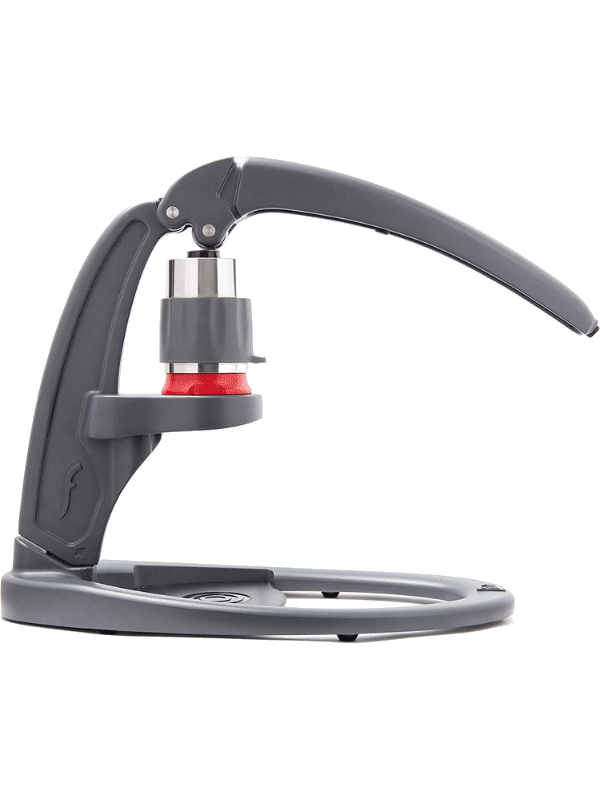
| Price | $ |
| Dimensions | 6.10 × 12.40 × 10.24 in (D, W, H) |
| Warranty | 5 years |
| Water Capacity | 60 ml = 1 solo shot |
| Material | Stainless steel |
An affordable, yet durable manual coffee machine works by pulling down a lever. It has a much different-looking portafilter compared to other models, though. It restricts the flow of water through your grounds to ensure consistent extractions.
It doesn’t have a million complex parts, so it’s simple to clean.
You could also buy a separate carrying bag for this maker, suggesting you could take it camping. So long as you have ample counter space.
I wouldn’t use it to make drinks for multiple people, though. Unless everyone isn’t in a hurry. Because the water reservoir holds up to 2 oz (60 ml) of water. And that’s enough to make 2 espresso shots.
2. Breville Bambino: Best Budget Automatic Machine
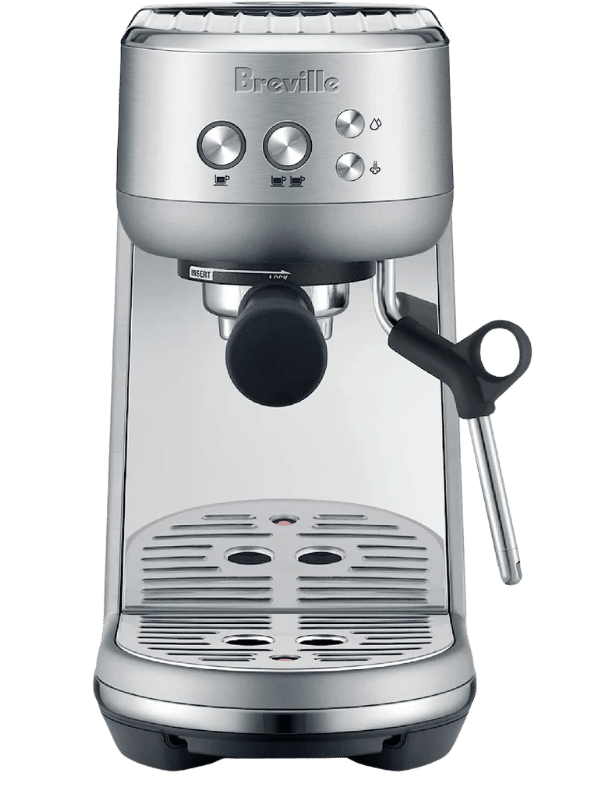
| Price * | $$$ |
| Dimensions | 13.7 × 6.3 × 12 in (D, W, H) |
| Water Reservoir Size | 47 fl oz = 47 solo shots |
| Material | Stainless steel |
| Coffee Maker Type | Semi-automatic espresso maker |
| Warranty | 1 year |
| Does it Use Pods? | No |
The Breville Bambino stands out as a compact, user-friendly espresso machine. With its rapid heat-up time, this machine delivers delicious espresso quickly.
Beginners would like it for its straightforward operation. Simple controls make it easy to pull a perfect shot. More experienced users would benefit from the machine’s ability to fine-tune shot parameters.
Its automatic milk frothing feature adds convenience, ideal for you who enjoy lattes or cappuccinos.
This compact powerhouse appeals to a broad audience, from novices to espresso enthusiasts seeking a space-saving solution.
3. Breville Barista Express: Best All-In-One Machine
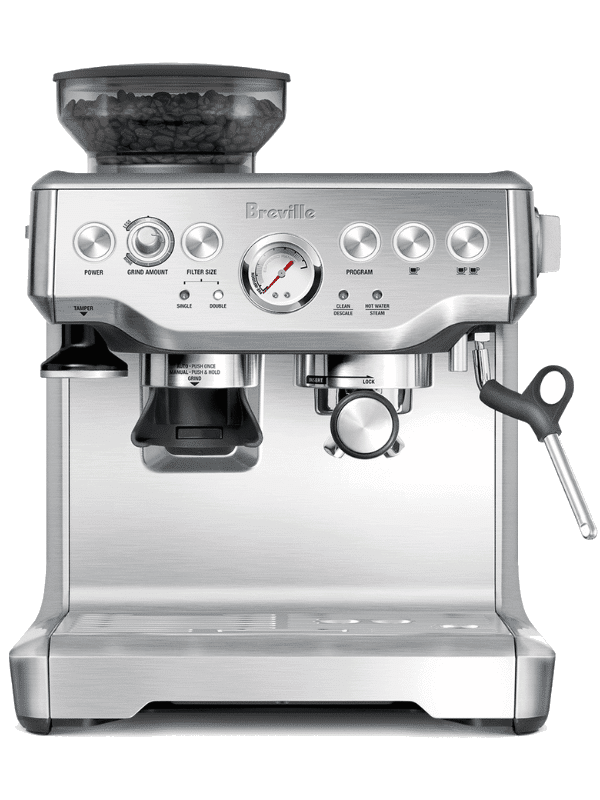
| Price | $$$ |
| Type | Super-automatic |
| Dimensions | 13.8 × 12.5 × 15.9 in (D, W, H) |
| Bars of Pressure | 9–15 bars |
| Boiler Type | Thermocoil |
| Warranty | 1 year |
| Water Capacity / Enough for | 67 fl oz = 67 solo shots |
| Material | Stainless steel |
The Barista Express includes a million accessories (not literally), a simple interface to control your shots, a steam wand, and a built-in, conical burr grinder with 16 settings.
It’s a fantastic machine because you’ll have everything to make a quick espresso. And if you want to improve your drink’s flavor, the machine gives you more flexibility due to the manual control over the microfoam milk texturing and grind type.
And it includes a Dosing Funnel. An attachment for your portafilter that prevents ground beans from overflowing. It’s a great way to lower the mess you’ll have to clean after brewing your drink.
Best Espresso Grinders
Here are some of the best espresso grinders to consider:
| Grinder | Blade or Burr | Manual or Electric | Why it’s the Best |
| 1Zpresso JX | Burr | Manual | High-quality materials & a decent price |
| Baratza Encore | Burr | Electric | An automatic grinder that uses hardened alloy steel burrs |
| Baratza Sette 270 | Burr | Electric | Programmable & easy to clean |
| DF64 | Burr | Electric | Titanium coated burrs & low-clump design |
| KINGrinder K2 | Burr | Manual | Best grinder under $100 |
Best espresso grinders compared.
Focus more emphasis on spending more on a grinder than a machine. The particle size and consistency will affect the taste and quality of your espresso.
Pairing a top-notch grinder with a modest machine often yields better results than using a mediocre grinder with a high-end machine.
Wait:
None of these are blade grinders. Why?
Burr grinders use a couple of abrasive surfaces to crush beans into uniform particles. And the uniform particles give you a better-tasting coffee [2]. However, these will cost more than blade grinders.
What Is Espresso?
Espresso is a strong, concentrated coffee. Baristas and espresso maker owners create this by forcing hot water through finely-ground coffee beans under high pressure.
This process extracts rich flavors from the beans and creates a thick, golden crema. Crema is a caramel-tinted puffy foam that floats on espresso once hot water emulsifies coffee bean oils.
What Is an Espresso Machine?
An espresso machine is an appliance used to create espresso. It forces hot pressurized water through a compressed puck of coffee grounds. From there, the resulting espresso flows from the puck into your cup.
All espresso makers have these components:
- Portafilter: the puck that holds your ground coffee beans
- Boiler: boils water to produce steam
- Pump: creates brewing pressure
- Grouphead: pulls water into the filter
I’ll talk more about these components and others to consider in a bit. First, I want to talk about what’s possible to make with an espresso machine.
How Does an Espresso Machine Work?
Here’s how an espresso maker works:
- The boiler in an espresso maker puts the water at around 190–196 °F (87–91 °C)
- The pump sucks water through your machine
- The grouphead forces at least 9 bars of pressure through finely ground coffee grounds in a portafilter
What are “bars of pressure?”
Bars of pressure measure the force pushing espresso through coffee grounds.
Espresso machines need high pressure for optimal extraction. A standard espresso requires 9 bars of pressure, which equals about 130 pounds per square inch (PSI). This pressure extracts flavors from the coffee grounds and creates espresso.
What Can You Make with an Espresso Machine?
Here are all the popular drinks you could make with an espresso maker:
| Coffee Drink | Ingredients |
| Americano | Espresso shots, hot water |
| Latte | Espresso, steamed milk, milk foam |
| Red Eye | Coffee & espresso |
| Black Eye | Coffee & double shot of espresso |
| Dripped Eye | Coffee & triple shot of espresso |
| Lazy Eye | Coffee & quadruple shot of espresso |
| Cappuccino | Espresso & steamed milk, milk foam |
| Manilo Long Black | Espresso, hot water, & lemon peel |
| Flat White | Espresso & microfoam (steamed milk with small, fine bubbles) |
| Cubano | Espresso & demerara sugar |
| Café Crema | Espresso, hot water, & crema |
| Zorro | Doppio, hot water, & steamed milk |
| Cortado | Espresso, steamed milk, & small amount of milk foam |
| Café Breve | Espresso & steamed half-and-half |
| Espresso Romano | Espresso & lemon peel |
| Guillermo | Mocha & orange peel |
| Irish Coffee | Coffee, Irish whiskey, sugar, & heavy cream |
| Vienna Coffee | Espresso, whipped cream, & chocolate shavings |
| Galão | Espresso, steamed milk, & foam |
| Macchiato | Espresso & dollop of milk foam |
| Long Macchiato | Double espresso & dollop of milk foam |
| Mocha | Espresso, chocolate syrup, steamed milk, & milk foam |
| Marocchino | Espresso, cocoa powder, steamed milk, & milk foam |
| Rápido y Sucio | Espresso & Mexican coffee liqueur |
| Freddo Cappuccino | Espresso, cold milk, ice cubes, & milk foam |
| Affogato al Caffe | Espresso & vanilla ice cream |
| Café Medici | Double espresso, orange peel, chocolate syrup, & whipped cream |
Ingredients in popular espresso-based drinks compared.
Some of these drinks may require you to use different amounts of shots, like:
- Ristretto: restricted (short) shot that has more intense flavor
- 1:1 ratio of water/coffee
- Long shot (Lungo): uses more water & has less flavor
- 1:3 ratio
- Single shot (Solo): a single shot for drinks
- 1:1.5–1:2 ratio
- Double shot (Doppio): a couple espresso shots extracted using a double coffee filter
- 1:1.5–1:2 ratio; same as regular espresso
Now that’s out of the way. Let’s see what you should consider when getting a machine.
FAQs
Read on to find frequently asked questions about buying espresso machines.
Does Buying an Espresso Machine Save Money?
You will save money by buying an espresso maker instead of buying from a coffee shop.
A source suggests coffee from an espresso maker will cost, on average, $1,117 a year [3]. Whereas, a café would cost you around $3,285 a year.
Where Can I Buy an Espresso Machine?
Buy espresso machines from hypermarkets, online shops, and other physical stores that sell kitchen appliances.
How Much Should I Spend on an Espresso Machine?
An entry-level budget espresso machine will cost you at least over $100.
High(ish)-quality automatic machines will cost you between $400 and $700. And high-end machines will cost over $1,000.
What Do I Need to Buy for My Espresso Machine?
Every espresso machine owner should buy a push tamper, cleaners to descale your machine, a coffee grinder if your machine doesn’t include one, and an IMS basket to make your espresso taste better. As you’ll have more consistency with extracting espresso.
Conclusion
I didn’t think so many factors went into shopping for an espresso machine. Mostly, everything depends on how much you want to spend on a grinder and a machine. And how many people you’ll serve.
Enthusiasts and businesses will need to dive deeper into their needs. Considering they want the best-tasting drinks or to serve many people.
Did I need to provide more examples of good espresso machines? Explore a piece we wrote covering many more great makers.

